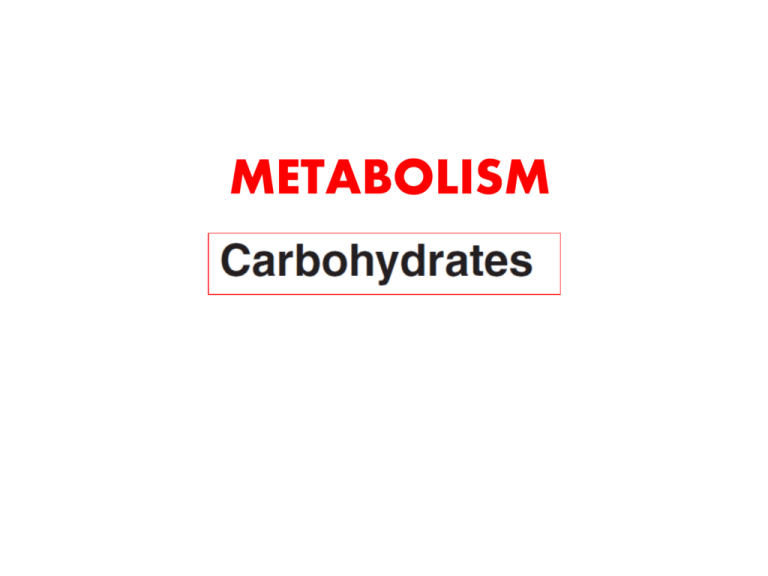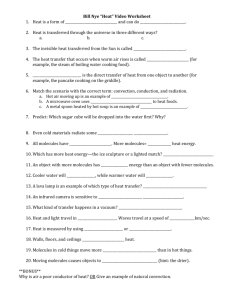Anabolic pathways
advertisement

METABOLISM The enzymatic reactions does not occur in isolation but rather they occurred in an organized manner i.e. a Pathway!!! Metabolism, is the sum of all the chemical changes occurring in a cell, a tissue, or the body. Most pathways can be classified as either catabolic (degradative) or anabolic (synthetic). Catabolic reactions break down complex molecules, such as proteins, polysaccharides, and lipids, to a few simple molecules, for example,CO2, NH3 (ammonia), and water. Anabolic pathways form complex end products from simple precursors, for example, the synthesis of the polysaccharide, glycogen, from glucose. Catabolic pathways Catabolic reactions serve to capture chemical energy in the form of adenosine triphosphate (ATP) from the degradation of energyrich fuel molecules. Catabolism also allows molecules in the diet (or nutrient molecules stored in cells) to be converted into building blocks needed for the synthesis of complex molecules. Three stages of catabolism: 1. Hydrolysis of complex molecules: In the first stage, complex molecules are broken down into their component building blocks. For example, proteins are degraded to amino acids, polysaccharides to monosaccharides, and fats (triacyl glycerols) to free fatty acids and glycerol. 2. Conversion of building blocks to simple intermediates: These building blocks are further degraded to acetyl coenzyme A (CoA) and a few other, simple molecules. Some energy is captured as ATP, (but the amount is small compared with the energy produced during the third stage of catabolism). 3. Oxidation of acetyl CoA: The tricarboxylic acid (TCA) cycle •final common pathway ---•Oxidation of acetyl CoA generates large amounts of ATP via oxidative phosphorylation as electrons flow from NADH and FADH2 to oxygen. Anabolic pathways Anabolic reactions:combine small molecules, such as amino acids, to form complex molecules, such as proteins. require energy (endergonic), provided by the breakdown of ATP to adenosine diphosphate (ADP) and inorganic phosphate (Pi). often involve chemical reductions in which the reducing power is most frequently provided by the electron donor NADPH. Catabolism is a convergent process—i.e., a wide variety of molecules are transformed into a few common end products. Anabolism is a divergent process —a few biosynthetic precursors form a wide variety of polymeric or complex products. REACTIONS OF GLYCOLYSIS The conversion of glucose to pyruvate occurs in two stages The first five reactions of glycolysis correspond to an energy investment phase in which the phosphorylated forms of intermediates are synthesized at the expense of ATP. The subsequent reactions of glycolysis constitute an energy generation phase in which a net of two molecules of ATP are formed by substrate-level phosphorylation per glucose molecule metabolized.





